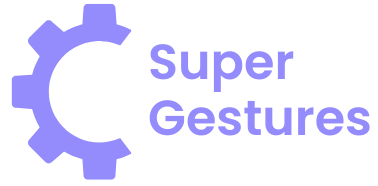Table of Contents
ToggleIn a world where coding often feels like deciphering an ancient language, no code SaaS emerges as the superhero we never knew we needed. Imagine building powerful applications without the headache of complex programming languages. It’s like having a magic wand for your business, allowing anyone to create and innovate without breaking a sweat—or their keyboard.
No code platforms are revolutionizing the way entrepreneurs and businesses operate. They empower users to turn ideas into reality faster than you can say “debugging.” With intuitive interfaces and drag-and-drop features, even your grandma could launch a killer app (and she might just give you a run for your money). As more companies jump on the no code bandwagon, it’s clear this trend is here to stay, making it the perfect time to explore how it can transform your workflow.
Understanding No Code SaaS
No code SaaS platforms empower users to create applications without needing programming skills. This accessibility changes how businesses approach software development.
What Is No Code SaaS?
No code SaaS refers to software as a service platforms that enable user-generated applications without traditional coding. They simplify development by offering visual interfaces and pre-built components. Companies can deploy solutions quickly, responding to market needs rapidly. Businesses save time and resources by using these platforms, eliminating the need for extensive development teams. Employees from various departments can build or modify applications, enhancing collaboration and innovation. The democratization of tech creates a conducive environment for startups and small businesses to thrive.
Key Features of No Code SaaS
No code SaaS offers several key features that streamline the development process. Visual development tools allow users to design applications graphically, promoting ease of use. Drag-and-drop functionality simplifies the incorporation of various components. Integration capabilities with third-party applications enhance overall functionality, connecting different services seamlessly. Customization options enable users to tailor applications to their specific needs without advanced technical knowledge. User-friendly dashboards support monitoring and management, making it easy to track application performance. These features collectively foster efficiency and speed, driving traction for businesses looking to innovate quickly.
Benefits of No Code SaaS

No code SaaS platforms offer significant advantages for users, making software development more accessible and efficient. Key benefits include improved accessibility for non-developers and rapid development and prototyping.
Accessibility for Non-Developers
Users without programming backgrounds can engage with no code SaaS. These platforms feature intuitive interfaces, simplifying complex tasks. Many components require only a drag-and-drop action, enabling anyone to create applications. Tasks that once needed programming skills are now manageable for marketing professionals, project managers, and other non-technical roles. By democratizing technology, businesses harness varied perspectives, fostering creativity and innovation. Employees can express ideas freely, creating solutions that align closely with their needs.
Rapid Development and Prototyping
No code SaaS accelerates the application development process significantly. Users can develop prototypes in hours, allowing for quick iterations and feedback. Companies respond to market demands faster, enhancing their competitive edge. Immediate adjustments become possible, enabling efficient testing and fine-tuning of ideas. Shorter development cycles lead to cost savings in time and resources. This swift prototyping capability allows startups to validate concepts before full-scale launches, optimizing investment strategies.
Popular No Code SaaS Platforms
No code SaaS platforms empower users to create applications with ease. Several options cater to various needs and preferences in the market.
Platform Comparisons
Airtable offers a spreadsheet-like interface ideal for organizing data and project management. Bubble stands out with its focus on building complex web applications without code. Glide specializes in creating mobile apps from Google Sheets within minutes. Webflow provides advanced design capabilities, enabling users to develop responsive websites effortlessly. Each platform varies in features, catering to different user needs and skill levels.
Use Cases of Each Platform
Airtable excels in project management and team collaboration, allowing marketing teams to track campaigns efficiently. Bubble supports e-commerce ventures, enabling entrepreneurs to design custom online stores swiftly. Glide finds its niche in startups seeking quick mobile solutions for customer engagement. Webflow appeals to designers aiming to create visually stunning websites without relying on developers. These tailored use cases illustrate the versatility of no code SaaS platforms across diverse industries and functionalities.
Challenges of No Code SaaS
No code SaaS platforms, while innovative, present several challenges that users need to address. Understanding these issues can help navigate the limitations of these tools more effectively.
Limitations and Constraints
Limited customization often arises with no code SaaS solutions. Users may find themselves restricted by pre-built templates, unable to tailor applications to specific needs. Complexity increases when integrating with legacy systems. These systems may not always work seamlessly with no code platforms, creating additional hurdles. Scalability poses another concern, as growing businesses might outpace the capabilities of their no code solutions. Moreover, performance optimization remains challenging, particularly for applications handling large data volumes. Despite their benefits, these constraints necessitate careful consideration when investing in no code SaaS.
Security Considerations
Security vulnerabilities often accompany no code SaaS usage. Users must be aware of data protection standards, particularly when sensitive information is involved. Many platforms might lack robust encryption methods, leaving data exposed. Compliance with regulations like GDPR becomes critical, as users may inadvertently breach legal requirements. Trusting third-party providers can heighten risks related to data breaches or loss. Regular audits and updates are essential to mitigate these security challenges. By prioritizing security measures, users can navigate these inherent risks and maintain a secure environment for their applications.
No code SaaS platforms are reshaping the landscape of software development by empowering users to create applications without extensive coding knowledge. This shift not only accelerates innovation but also democratizes technology, allowing a broader range of professionals to participate in the development process.
While challenges like customization limitations and security concerns exist, the benefits of rapid prototyping and enhanced collaboration cannot be overlooked. As businesses continue to embrace these tools, the potential for growth and efficiency will only increase. Adopting no code solutions can be a game-changer for organizations looking to stay competitive in a fast-paced market.




